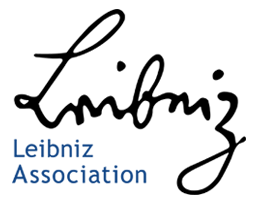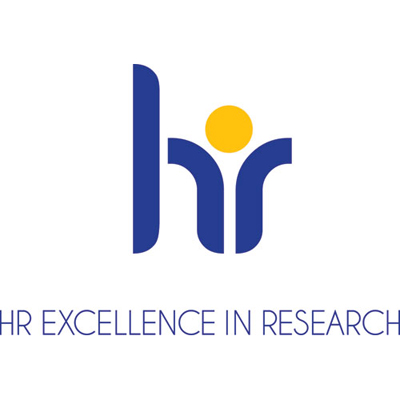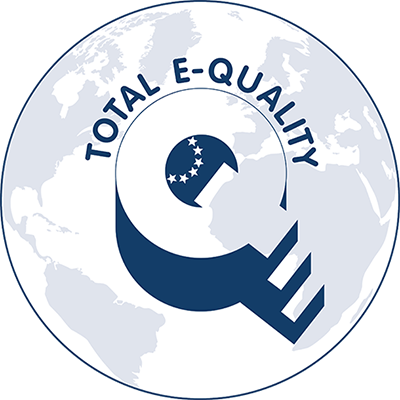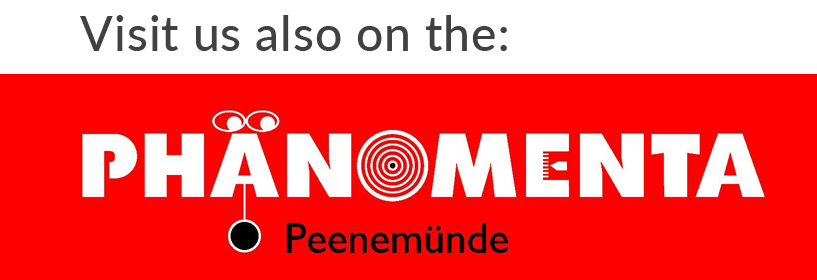
The Kompetenzzentrum Diabates Karlsburg (KDK), founded in 2016 and funded by the European Union through the European Regional Development Fund and the state of Mecklenburg-Western Pomerania, is a cooperation initiative between the Dr. Guth GmbH & Co. KG and the INP. The KDK is active in the field of hospital-related research, development and application of innovative technologies in medicine. With the newly created laboratory rooms directly in the Karlsburg Clinic, product ideas are developed and tested on site in everyday clinical practice - a completely new approach for the transfer of research results in Mecklenburg Western Pomerania, but also throughout Germany.
At the moment, the focus of the clinic-accompanying research with spatial proximity to the patient is particularly on innovations in the fields of diabetes and wound care - such as plasma medicine or new diagnostic procedures. In the constellation of researchers, doctors and nurses in direct contact with the development departments of the companies, it is possible to collect data on the patient and correlate it directly with the results of basic research - in the service of developing innovative medical products for the benefit of the patient.
Numerous opportunities are available for the collaborative projects carried out at the KDK and for contract research to develop new products directly in everyday clinical practice. The interdisciplinary team from the fields of physics, biology, engineering, laboratory and clinic has access to comprehensive laboratory and equipment for microbiological and cell biological basic research, various physical diagnostics and measuring stations up to rapid prototyping as well as medically approved devices for clinical examinations and therapy. The resulting test samples or prototypes can be analysed and further developed in the next step in preclinical tests for biocompatibility and in clinical tests for their practicability in everyday clinical practice directly on patients. This procedure can be applied individually to new therapies, diagnostics and also prevention methods.
The KDK team is organised into two research groups. The "Plasma Wound Healing" group is primarily concerned with the investigation of new therapeutic procedures in the field of microbiology and cell biology, specifically with the wound healing-promoting effect through the application of cold plasmas. In the "Plasma Source Concepts" group, innovative solution concepts for medical technology issues are primarily developed and investigated. The focus here is on the conceptual design of optimised plasma sources for various medical applications.
COMPETENCIES
- Expertise in the fields of plasma technology, diabetology and wound healing as well as cardiovascular medicine
- Basic microbiological and cell biological research, e.g. realtime PCR, life-cell analysis and imaging
- Collection and processing of patient samples in the clinic
- Laboratory applications e.g. cytotoxicity test, viability test, inhibition tests
- Physical analyses and measuring stations e.g. highvoltage analyses, diagnostics for optical analysis
- Rapid prototyping with 3D printing in ceramics, plastics, synthetic resin and metal
- Precision mechanical manufacturing and adaptation of components
- Clinical testing in the field of preventive medicine, diagnostics and therapy, e.g. in the field of wound healing
Especially in plasma medicine - i.e. the application of cold physical plasmas - the proximity to the patient is of decisive advantage due to the very short half-lives of the biologically active components. The short distances between the treatment room / operating theatre and the laboratories for cell and molecular biology on the one hand and physics on the other provide numerous impulses for innovations in the field of medical technology and the application of cold plasmas in the hospital sector. The same applies to innovative products for diagnostics, which can also be tested and further developed in everyday clinical practice. Here, direct feedback from patients and doctors represents a decisive advantage in product development, as this results in short feedback loops and rapid iterations, which accelerates the development of prototypes enormously.
Project Topics
The project "Equipment for the Kompetenzzentrum Diabetes Karlsburg to carry out interdisciplinary collaborative research", launched in August 2017, is funded by the Ministry of Economics, Labor and Health of the State of Mecklenburg-Vorpommern from the European Regional Development Fund of the European Union with a total of 2.5 million euros and aims to provide the infrastructure in the form of laboratory equipment for patient-oriented application-oriented basic research in the field of chronic wound treatment at the Competence Center Diabetes Karlsburg.
There is currently no generally applicable concept for the diagnosis of inflammation / wounds - it is usually up to the clinics how the diagnosis is carried out. Usually, a visual analysis of the inflammation or wound situation and the determination of inflammation parameters in the blood is the first line of action.
In addition to a successful application of the intelligent insole developed by the company OT-aktiv GmbH, the early diagnosis of inflammation is another aspect of this study and the interdisciplinary work of the Kompetenzzentrum Diabetes Karlsburg at the Klinikum Karlsburg. If the targeted improvement in the diagnosis of inflammation through the newly developed insoles can be proven by this study, this would be an enormous advance for many diabetes patients with a high risk of developing diabetic foot syndrome, as the development of chronic wounds could possibly be avoided in time. The avoidance of hospital stays with their price-intensive treatments would relieve both clinics and health insurance companies, thus saving large amounts of money in the healthcare system.
The spectroscopy camera developed by Diaspective Vision GmbH is to be further developed in combination with various molecular biological methods by extending the spectrum of the camera to a new wavelength range in order to make bacterial biofilms or bacteria visible. By detecting bacterial markers in the wound fluids and correlating them with the recorded fluorescence spectra, an innovative and, above all, non-invasive method for rapid wound assessment will be developed. The KDK subproject will play a central role in elucidating the bacterial burden in chronically infected wounds, in addition to providing and supporting a specific patient cohort with exudate examinations. Molecular analysis of soluble wound components in response to infection (i.e., detection of bacterial components as well as human signaling and messenger substances) runs parallel to time-consuming detailed microbial analysis. Since these soluble components may well be spectroscopically active, these studies are important for two reasons: first, for early analysis of microbial colonization, and second, as an indication or confirmation of the presence of molecules to be detected by hyperspectral analysis. Since molecular biological methods can also be used to estimate quantities (semi-quantitative ELISA), the detection limits of the hyperspectral camera could thus also be explored. This is of particular importance for its later use, as it is of high importance for clinical routine to know and localize both the type and the amount of microorganisms. With these diagnostics (bacterial detection) adapted to the respective patient, it should be possible at a later stage to make bacteria visible directly in the wounds, even to identify them if necessary, and thus to develop a time- and cost-efficient diagnosis and thus a rapid initiation of therapies adapted to the bacteria accordingly.
Adipose tissue contains stem cells and special messenger substances that have a positive effect on the healing of various diseases and wounds. Initial studies show that they effectively contribute to faster healing of chronic wounds.
In the "ActiHeal" project funded by the Technology Consulting Institute (TBI), a novel method is being developed to activate the regeneratively effective cells and prepare them for clinical application. In this process, the body's own cells (plus the messenger substances released) are to be applied to wounds and thus contribute to accelerated wound closure. Since enzymatic cell isolation is associated with higher costs and possible safety concerns, and in some cases has reduced efficacy, non-enzymatic isolation is preferred here.
For this purpose, scientists of the KDK together with the Human Med AG and the University of Rostock are developing a device which will be used for the enzyme-free isolation of the stromal vascular fraction (SVF) and ultimately for the enrichment of the regeneratively effective cells contained therein from autologous adipose tissue. In stromal vascular fraction (SVF), adipose tissue removed from the human body by liposuction is treated with ultrasound to separate stem cells and other growth cells.
A particular challenge is to test the newly developed, innovative isolation and application process in a single-handed manner and without substantial processing of the cells in clinical applications. In one step, the cells are isolated, purified and administered back to the patient without leaving the operating room.
In addition, combined plasma modulation of these cells will be investigated. By using regenerative cells in combination with an appropriately adapted plasma treatment of the extracted endogenous SVF, the advantages of the two technologies are to be exploited even better, and coordinated accordingly. First, cold plasma will support the isolation of regenerative cells from the liposuctioned adipose tissue. Furthermore, it is to be tested whether a treatment with cold plasma can also stimulate the extracted cells. In this context, INP researchers can draw on their many years of experience in the use of cold plasmas. Cold plasmas are energy-charged gases in an excited state that have already proven their effectiveness and tolerability in the treatment of chronic wounds.
In the joint project AutoImmun, the Kompetenzzentrum Diabetes Karlsburg (KDK) in cooperation with the company EUROIMMUN is developing a new test system for the diagnosis of diabetes mellitus type 1. The aim of the project is to realize a rapid and easy-to-use test that detects diabetes-associated autoantibodies against glutamate decarboxylase (GAD65), tyrosine phosphatase (IA-2) and insulin already at an early stage. AutoImmun is thus developing a functional alternative to previously used methods.
In this regard, the project team is using a chemiluminescence immunoassay. Chemiluminescence immunoassay is a method for detecting even the smallest traces of antibodies in an organism. It is based on the chemical reaction of an antigen with an antibody. In this phenomenon, part of the energy released is emitted in the form of visible light, which is then measured. To date, the radioimmunoassay is considered the gold standard in the diagnosis of type 1 diabetes mellitus. However, due to the use of radioactively labeled antigens, the procedure is relatively time-consuming and requires a corresponding amount of safety and technical effort.
Furthermore, the AutoImmun collaborative project aims to explore alternatives for the diagnosis of type 1 diabetes autoantibodies. A possible alternative to the detection of autoantibodies could be the direct detection of the diabetes-associated autoantigens glutamate decarboxylase (GAD65) and tyrosine phosphatase (IA-2) in the body, since the formation of autoantibodies requires the release of autoantigens from damaged beta cells. Initial studies on the detection of GAD65 antigens showed the feasibility of this approach in principle. The detection of autoantigens would not only be of interest for the prediction and differential diagnosis of diabetes, but also of relevance for the early detection of graft rejection in patients after islet cell transplantation.
At the Kompetenzzentrum Diabetes Karlsburg , the chemiluminescence immunoassay test systems developed in the project will be tested for their sensitivity and specificity. In close cooperation with the Klinikum Karlsburg, the development and validation of the special bioanalytical method will then be carried out with clinically characterized patient samples.
In parallel, medical aspects will be investigated. Of interest here is whether the measurement of autoantibodies is also suitable for monitoring the course of the disease in patients with type 1 diabetes and whether they could provide indications of incipient late complications. For this subproject, clinical course samples of newly manifested type 1 diabetes patients will be collected over a period of 2 years and the correlation of marker levels with disease and therapy progression will be investigated.
The detection of single autoantibodies is the earliest sign of the autoimmune process. The risk of developing type 1 diabetes mellitus increases with the concentration, number, and specificity of different autoantibodies. The chances of successful therapeutic intervention are greatest at the time of single autoantibody detection. By using automatable, sensitive autoantibody screening, type 1 diabetes diseases can be detected and treated at an early stage in the future.
The project aims to measure the absolute ion density (MAID) by experimentally acquired high frequency current signals. It is funded by the Deutsche Forschungsgemeinschaft (DFG, 466331904) via Sachbeihilfe. Despite atmospheric pressure plasma discharges being investigated intensively since over a decade, the determination of absolute ion densities still proves a challenging topic in plasma diagnostics. The common approach with commercial mass spectrometers deliver relative values and actinometry as well as modelling deliver absolute ion densities while requiring specific boundary conditions.By evaluating self-excited ion acoustic waves (IAW) in the plasma, the proposed project addresses the determination of absolute ion densities by current signal measurement. Previous results and calculations show the existence of oscillations on the current signal once the ion densities cross a lower threshold [1,2]. The evaluation of the oscillation frequency equal to the plasma ion frequency revealed the absolute ion density with a high time resolution within nanoseconds [3].
The presented project addresses the following scientific questions:
- Is there a correlation between occurrence of IAW and the ion polarity or gas composition; is it possible to observe IAW generated by negative ions?
- Is the nature of IAW excitation based on self excitation or an external excitation purely due to the fast rising current pulse of the transient spark?
- Is it possible to observe an IAW within a single filament of the dielectric barrier discharge (DBD) and which parameters can be determined?
- Is it possible to observe IAW within modeling results?
- Is an external excitation of IAW possible and could this allow a tuning of the detection limit?
Aside from the application of the proposed diagnostic on the already successful transient spark discharge, the investigation of a dielectric barrier discharge (DBD) with a broader scientific database is targeted. The DBD allows the operation at different gases including admixtures. By accompanying modelling the expected ion densities and dominant ions will be calculated to support ion identification. At the end of the project the until now passive diagnostic shall be converted into an active diagnostic by coupling a high frequency excitation into the electrical system. An active diagnostic might allow the ion density measurement at any desired plasma setup.


Scientific Project Management:
Dr. Torsten Gerling
Phone: +49(0) 38355 6686 2601
gerlinginp-greifswaldde
[1] Gerling, T. (2014). Beiträge zur optischen und elektrischen Charakterisierung des dynamischen Verhaltens von Plasmaspezies in Atmosphärendruck-Plasmen [Ernst-Moritz-Arndt University Greifswald]. ub-ed.ub.uni-greifswald.de/opus/frontdoor.php
[2] Gerling, T., Bussiahn, R., Wilke, C., & Weltmann, K.-D. (2014). Time resolved ion density determination by electrical current measurements in an atmospheric pressure argon plasma. Europhys. Lett., 105, 25001. doi.org/http://dx.doi.org/10.1209/0295-5075/105/25001
[3] Gerling, T., Wilke, C., & Becker, M. M. (2020). Fast electrical diagnostics and dispersion relation for ion density determination in an atmospheric pressure argon plasma. Journal of Physics D: Applied Physics, 54(8), 85201. doi.org/10.1088/1361-6463/abc5e8
[4] Bussiahn, R., Brandenburg, R., Gerling, T., Kindel, E., Lange, H., Lembke, N., Weltmann, K.-D., von Woedtke, T., & Kocher, T. (2010). The hairline plasma - an intermittent negative dc-corona discharge at atmospheric pressure for plasma medical applications. Applied Physics Letters, 96(14), 143701. doi.org/10.1063/1.3380811
[5] Höft, H., Kettlitz, M., Hoder, T., Weltmann, K.-D., & Brandenburg, R. (2013). The influence of O 2 content on the spatio-temporal development of pulsed driven dielectric barrier discharges in O 2 /N 2 gas mixtures. Journal of Physics D: Applied Physics, 46(9), 95202. stacks.iop.org/0022-3727/46/i=9/a=095202
Project Management Board:

The project described below receives financial support from the European Union through the European Regional Development Fund and the state of Mecklenburg-Western Pomerania. The focus of the joint research project is the new development of a device that enables the ambulatory application of plasma. To this end, OT aktiv is developing a device that standardizes mobile plasma application. The development of the device is supported by the partners INP and the Kompetenzzentrum Diabetes Karlsburg (KDK) and will be comparatively tested in an inpatient-ambulatory application observation (AWB).
The AWB is accompanied by the partner Unimedizin Rostock and supported by indication-appropriate, interdisciplinary treatment paths. The newly developed device represents a component for networking the players involved in wound care. A product-ready prototype is to be completed at the end of 2022.
Motivation:
Chronic wounds, in their various manifestations and localizations, are a complex, widespread health problem affecting about 1 million people in Germany. Due to the problems, which often last for years, the affected patient typically goes through an odyssey via various diagnostic and therapeutic institutions. One opportunity for improvement lies in the mobilization of plasma therapy, which has been proven in the clinic to have a promising future and to promote healing. This approach is particularly appropriate for an area like Mecklenburg-Western Pomerania and could close gaps in care.
Scientific project management:
Dr. Torsten Gerling
Phone: +49(0) 38355 6686 2601
gerlinginp-greifswaldde

The joint research project "P-Array" aims at the upscaling of the intensively researched plasma jet technology as well as an increase in mobility by means of an accumulator. For this purpose, the described project receives financial support from the European Union via the European Regional Development Fund and the state of Mecklenburg-Western Pomerania (TBI-V-1-361-VBW-124).
The plasma jet array must both ensure efficacy and meet current and future regulatory requirements. At INP and the Kompetenzzentrum Diabetes Karlsburg (KDK), based on years of preliminary work, a functional model of the scaled-up plasma jet technology is being researched in compliance with prescribed safety parameters and its efficacy is being demonstrated. In parallel, neoplas med GmbH is developing a device concept including an accumulator. Both fields of work will then be combined into one device, including ergonomic considerations. In the course of this, final safety-related questions will also be answered. The resulting device will pave the way for a new medical device with accumulator and large-area treatment.
Motivation
Patients with wound healing disorders sometimes develop large-area chronic wounds that can impose significant restrictions on their daily lives. There is still no established therapeutic approach for this problem. With the help of plasma medicine, the treatment of non-healing up to out of treatment wounds with cold atmospheric pressure plasmas, a specific therapy for this problem shall be developed. In particular, the practical question of selective treatment for local disturbances of wound healing and large-scale treatment of the entire wound arises. Medically approved devices based on the plasma jet are so far limited to the kINPen® MED.
Scientific project management:
Dr. Torsten Gerling
Phone: +49(0) 38355 6686 2601
gerlinginp-greifswaldde

Publications
| Year: |

































